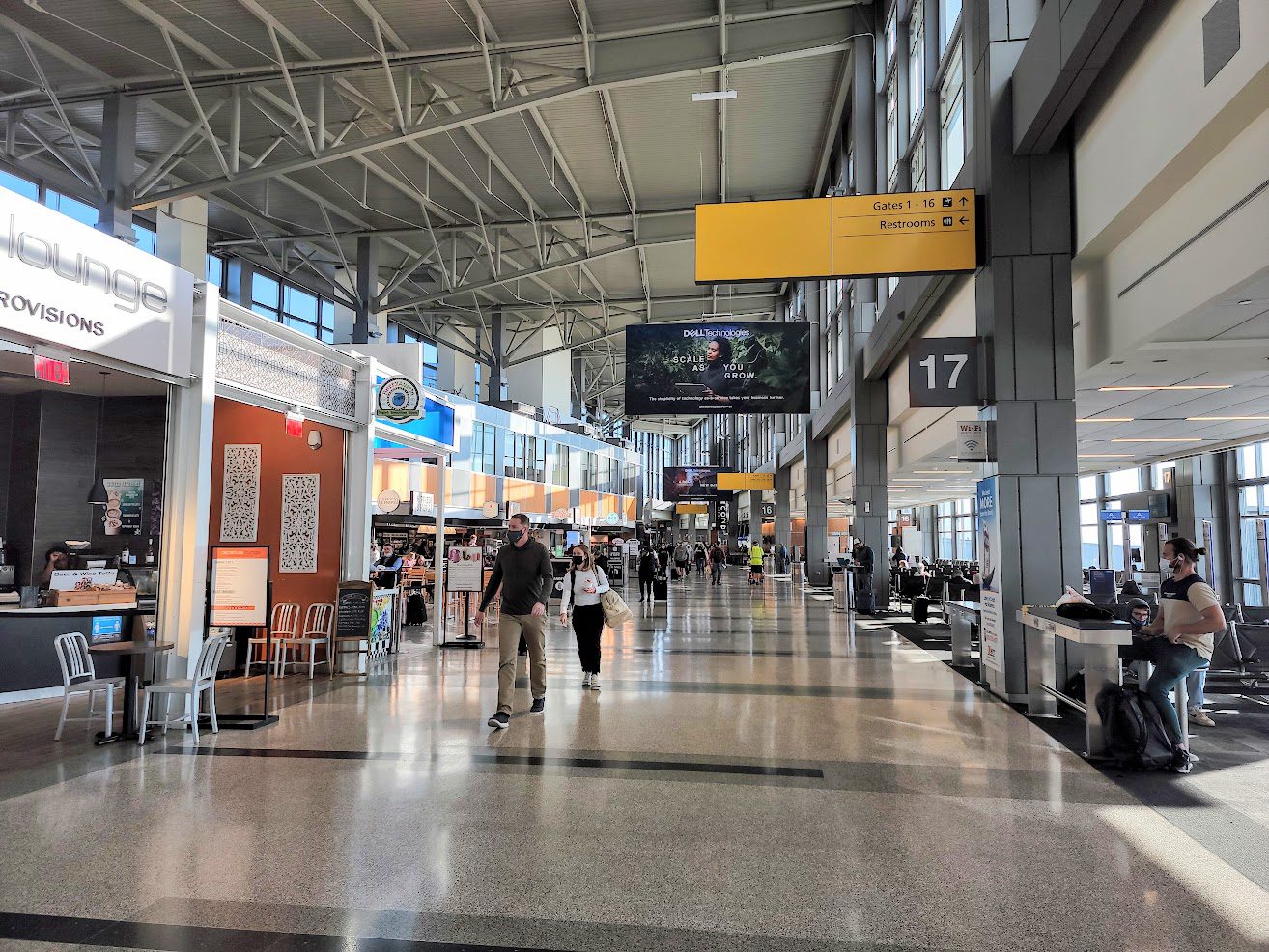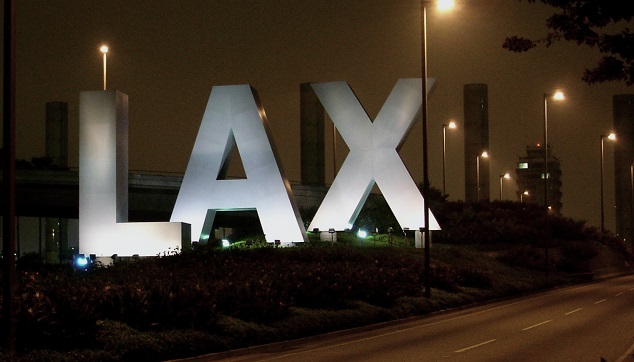Brian Sumers highlights data on which cities added the most airline seats from 2019 to 2022, and which cities saw the greatest reduction in airline capacity. With managed corporate travel still down 25%, leisure destinations dominate.
Here are the top 5 growth markets:
- Austin: +48.4%
- Nashville: +34.7%
- Maui: +31%
- Charleston, SC: +29.6%
- Ontario, CA: +24.5%
Austin was year-in, year-out one of the fastest growing airports before the pandemic. Then things accelerated. American Airlines made a huge play for Austin, tripling flights and quadrupling destinations. Not everything has worked, but the city is an increasingly important one.
Southwest is still the largest airline in Austin, but Delta squandered its opportunity to build out its focus city. They still have gates and a gorgeous club and should be doing more.

Nashville is in many ways like Austin, and it was once an American Airlines hub. It’s an eclectic mix of modern and old school charm. There’s a lot that’s attractive about Nashville. The same can be said of Charleston, which has experienced significant growth. (Wentworth Mansion is an excellent use of Hyatt points there.)
Hawaii saw significant growth during the pandemic. Anywhere you could go for leisure boomed, in Hawaii’s case at least once it re-opened and stopped requiring quarantine on arrival. There’s been a pullback from Hawaiian markets, but Maui’s growth was particularly impressive.
Here are the top 5 declining markets:
- Milwaukee: -22.4%
- Philadelphia: -16.8%
- Los Angeles: -16.7%
- Fort Myers: -16.2%
- San Francisco: -15.8%
San Francisco and Los Angeles aren’t surprises here. San Francisco itself has stagnated, while both California cities are major gateways to Asia during normal times. Asia travel hasn’t recovered as quickly as other destinations, with much of Asia just now re-opening.

Meanwhile Philadelphia has been American’s primary transatlantic gateway. They used to fly to numerous smaller cities in Europe, which haven’t returned. American lacks the Boeing 757 and Boeing 767 aircraft that made these routes possible, meanwhile Boeing has been delayed in delivering 787s. Philadelphia also suffers as American has concentrated on rebuilding efforts at New York JFK as part of its partnership with JetBlue.
It’s not only international that suffers at Philadelphia. American’s domestic route network there was optimized for connections to international, and without those international flights their domestic connectivity has remained reduced as well.

Fort Myers is a bit of an outlier, since Florida generally has boomed. And Milwaukee, well, many years ago the show Night Court helped viewers understand what life was like in the Soviet Union in the 1980s.
When you open your eyes, you’re going to be in the middle of Milwaukee. No matter where you go, no matter how far you run, you’re still going to be in the middle of Milwaukee. You can get in a cab, and drive two hundred miles in any direction, and you’re still going to be in the middle of Milwaukee. You can get in an airplane, and fly two thousand miles, and you’re still…
Maybe it’s a good thing that the reboot of Midwest Express hubbing there never got off the ground.


The domestic flights out of PHL hurt much more than the international, i can fly to Copenhagen for less than San Diego, or many other major cities.
Fort Myers is the gateway for the area devastated by Hurricane Ian. I suspect if you looked at the first half of 2022, their numbers were very good, but at this point, it’s going to take a while for the tourism sector there to physically rebuild enough to support 2019 or 2021 numbers.
I love Milwaukee and and I’d fly there once or twice a year from SFO or Sacramento but they killed all the direct flights and now I have to go through O’Hare and most of the time I just get out there and drive up. Chicken or the egg I guess.
I bet you if United added a nonstop from SFO again a few times a week that it could work.
Agree that RSW capacity has been heavily affected by Hurricane Ian. Anecdotally it seemed capacity was cut 20% or more by the major players on future schedules once the extent of the damage to key vacation destinations in the region (Sanibel, Captiva, Fort Myers Beach) became clear. Somewhat fortuitous, though, as the airport is beginning a major project to consolidate and enlarge the woefully inadequate security checkpoints which will temporarily reduce gate capacity.
Agree with Tim’s comment about PHL – I mean, technically there’s nothing really to agree on here, the data would show definitively where cuts have been made, but anecdotally this has been my experience – as an NYC traveler I see many fewer domestic routings connecting there. I suspect it has to do with expansion at DCA as well; National seems to be a major hub for domestic traffic out of NYC these days, along with a smattering of other oddball focus cities, similar to – albeit lesser than – Austin, such as Columbus, OH and Pittsburg, PA.
Milwaukee used to be a great “backdoor” into Chicago but now the routes are too expensive and crime isn’t awesome there either. Of course, you could say crime is an issue with a number of the cities on this list. I doubt more people today are saying “gosh honey we should go on vacation to San Francisco” than they did 10 years ago. Austin and Nashville have really grown with wealthy people that like to travel as well. Maui can show a lot of growth by percentage as it’s a smaller market.
As for AUS, AA and UA simply pulled out all of the stops to soak up whatever demand was there and DL simply was not interested in getting into a 3-way battle to develop a focus city at that time.
DL did become the largest carrier at LAX by flights as well as local market revenue while DL briefly achieved both roles but has solidly become the largest carrier at BOS based on revenue on an ongoing basis.
BOS and LAX are clearly much larger and more strategically important markets than AUS and given that AUS is not through building facilities which could allow DL to pick up where it left off at some point in the future.
BNA is in a similar position. The airport simply has not been able to keep up demand for gates from airlines and won’t for for years. AA and DL are still vying for the #2 carrier behind WN so who is on the margins matters.
PHL is a victim of exactly what I noted last week in the discussion about DCA becoming a connecting hub; AA is overhubbed on the east coast and has to make the call about what markets to preserve. The DCA slots are too valuable even though the DC mayor is asking the feds to send its workers back to the office – which is depressing government-related traffic.
When airlines like AA shift their dominance in major markets from one hub to another, it isn’t a big surprise. When other airlines like DL are growing the number of markets including its hubs where it is the largest carrier, it is a larger long-term sign. As the role of low cost carriers struggle (NK just sold a bunch of jets which changes the narrative of much growth the LCC/ULCCs will do) while legacy carriers relatively are growing, the industry is going to look different in a few years and it will be driven by the ability of carriers to become significant in markets.
New York, Washington, and Miami (or Atlanta) make sense as strategic hubs for Europe, Middle East, Africa, and Latin America. Operationally, it is beyond me why AA might want to develop Boston, Philadelphia, and Charlotte as hubs. Financially, I’m sure there’s a reason.
I was looking at JFK to FRA. Routings went through CLT or DFW. Are they (stinkin’) kidding me?
“American lacks the Boeing 757 and Boeing 767 aircraft that made these routes possible”–Did American have these planes before when it served these routes? What happened to the planes? Why does the airline no longer have them?
@guflyer – American retired the 757 and 767 fleet types early in the pandemic
@Tim Dunn – “As for AUS, AA and UA simply pulled out all of the stops to soak up whatever demand was there and DL simply was not interested in getting into a 3-way battle to develop a focus city at that time.”
United simply doesn’t belong in this discussion in the same way, they’ve upgauged some flights but that’s really it. And Delta announced a focus city for Austin in 2018. They had a two year head start on American’s growth. Delta is also not fully utilizing the gates it has.
“ Financially, I’m sure there’s a reason.”
CLT is incredibly cheap.
It’s AA’ s most profitable hub
https://www.thestreet.com/investing/american-airlines-is-totally-in-love-with-its-charlotte-hub-here-s-why-14312248
Gary,
I obviously meant to say AA and WN.
Every airport has gate use requirements and Delta is either following them or the airport authority would be able to reassign the gates.
As much as you would like to think that AUS is the center of the world, Delta clearly saw the opportunity to grow in major coastal markets including LAX and BOS and shorted even its major core hubs of ATL, DTW, and MSP of growth during the recovery in order to grow its coastal hubs. It did that and is now the largest airline in both by one or more metrics – and both have seen and will seen significant international growth which is what the global carriers do best. Adding a bunch of domestic flights at AUS is not near as strategically important as longhaul international flying which Delta added in spades in BOS last year and is doing at LAX starting this summer and continuing for what will likely be several years.
Unlike AA that can’t figure out how to balance all of its many hubs and is giving up strength on a systemwide basis to DL as AA shifts growth from one hub where it is already strong to another, Delta’s total network footprint in large markets is larger and is growing, something neither AA or UA can say and WN obviously doesn’t fly longhaul international markets.
there was a time not that long ago that people accused Delta of underutilizing its gates at LAX and yet they invested a couple billion dollars and are now one of the largest tenants and largest airlines in size and giving LAX the international growth that the city wants. Delta knows how to play the long game and prioritize what matters.
If you bothered to look at Delta’s gate utilization at AUS compared to AA’s at ORD and PHL, it is certain that your criticism should be directed at AA which is spending billions on new terminal facilities in ORD. Since you don’t like in Chicago, I’m sure what happens there escapes your radar.
@Tim Dunn “Every airport has gate use requirements and Delta is either following them or the airport authority would be able to reassign the gates.”
Nobody said they’re failing to meet minimum use. That’s different than maximizing and you know it.
AUS turned out to be a good market, unsurprisingly Delta saw it before American did. They had other priorities.
AA is not maximizing opportunities at ORD (where they’ve always underperformed UA, long predating US Airways management) and I literally wrote about pulldown at PHL. AA has complained about lack of new gates at ORD, compared to UA, but they signed onto lease and plan and aren’t leveraging what they do have. But none of that has anything to do with Delta in Austin, that’s just you changing the subject 😉
Again, you want to focus on AUS because that is where you live.
If DL is failing to use its gates according to requirements, AUS will come after them.
The fact that AA and WN overuse their gates so much that their operation is strained doesn’t require every other carrier to do the same.
You know who has lost the most share in AUS? United. Delta carries more revenue from AUS than United because such a high percentage of UA’s traffic is to IAH which has very low value to UA relative from an AUS segment standpoint.
I’m not deflecting; I am simply providing appropriate context. If you can write an article touting the success of AA’s turning DCA into a hub, I can note that AA’s DCA hub comes at the expense of PHL and that DL’s decision to not add a dozen new cities – but has still grown the gauge of the core hub routes it serves from AUS – is because DL is gaining far more on a national stage than AA.
AUS is simply not anywhere near as big of a fish as LAX or BOS and it is not a distraction but context for me to note that DL focused on increasing its share in much larger markets while it defers growth but not walks away from AUS.
AUS is going nowhere but up. DL will grow there eventually.
btw, DL built a beautiful new SkyClub in BNA also so both cities are similar. DL once named BNA a focus city but they backed down probably because BNA doesn’t have the space for anyone to grow much. DL is still likely to bring the first US carrier longhaul service to BNA and I wouldn’t be surprised if the same is not also the case for AUS.